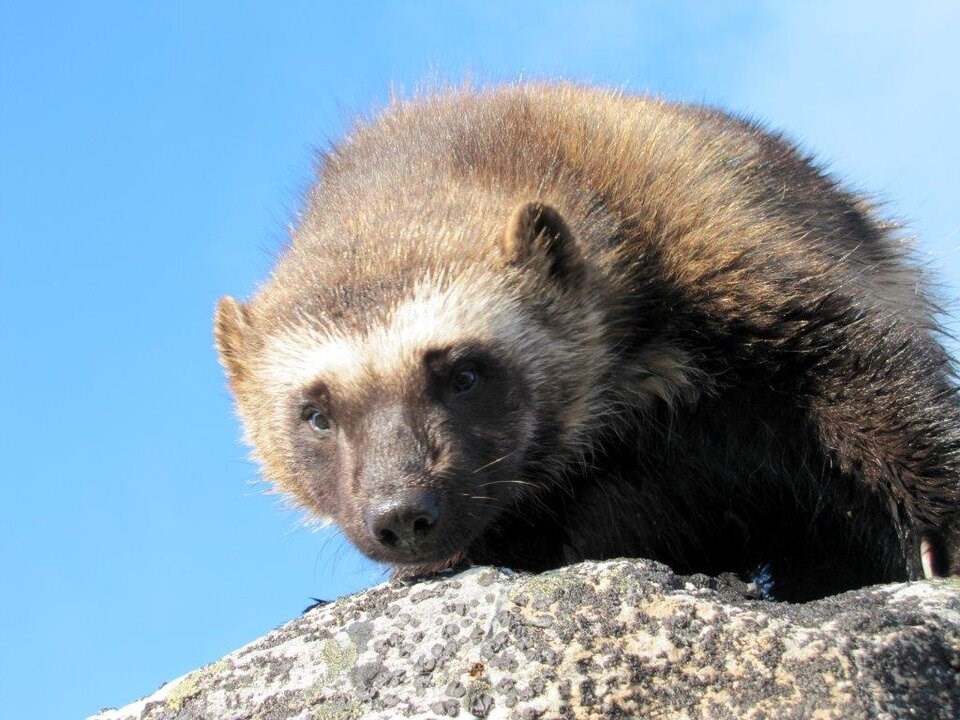In the wooded foothills of the Rocky Mountains, Jason Fisher nailed the flesh of a beaver carcass to a tree. The bait set, he unspooled several metres of barbed wire, wrapping it loosely around the trunk.
Glancing down from his snowmobile, Fisher saw a set of tracks in the snow. The trail of cone-shaped imprints — each crowned with five razor-sharp tips — came toward him and vanished into the bush. He froze, dismounted and moved to quietly follow the animal.
“As I approached, it heard this growling,” he later said. “It’s hissing and spitting in the most ungodly way.”
“That ear-splitting scream — somehow it gets right into your head.”
A wildlife biologist from the University of Victoria, Fisher had come to the B.C.-Alberta border to find this animal. But he knew better than to stay. He backed away, jumped on his snowmobile and retreated, leaving the bait and barbed wire to snag a fur sample for later testing.
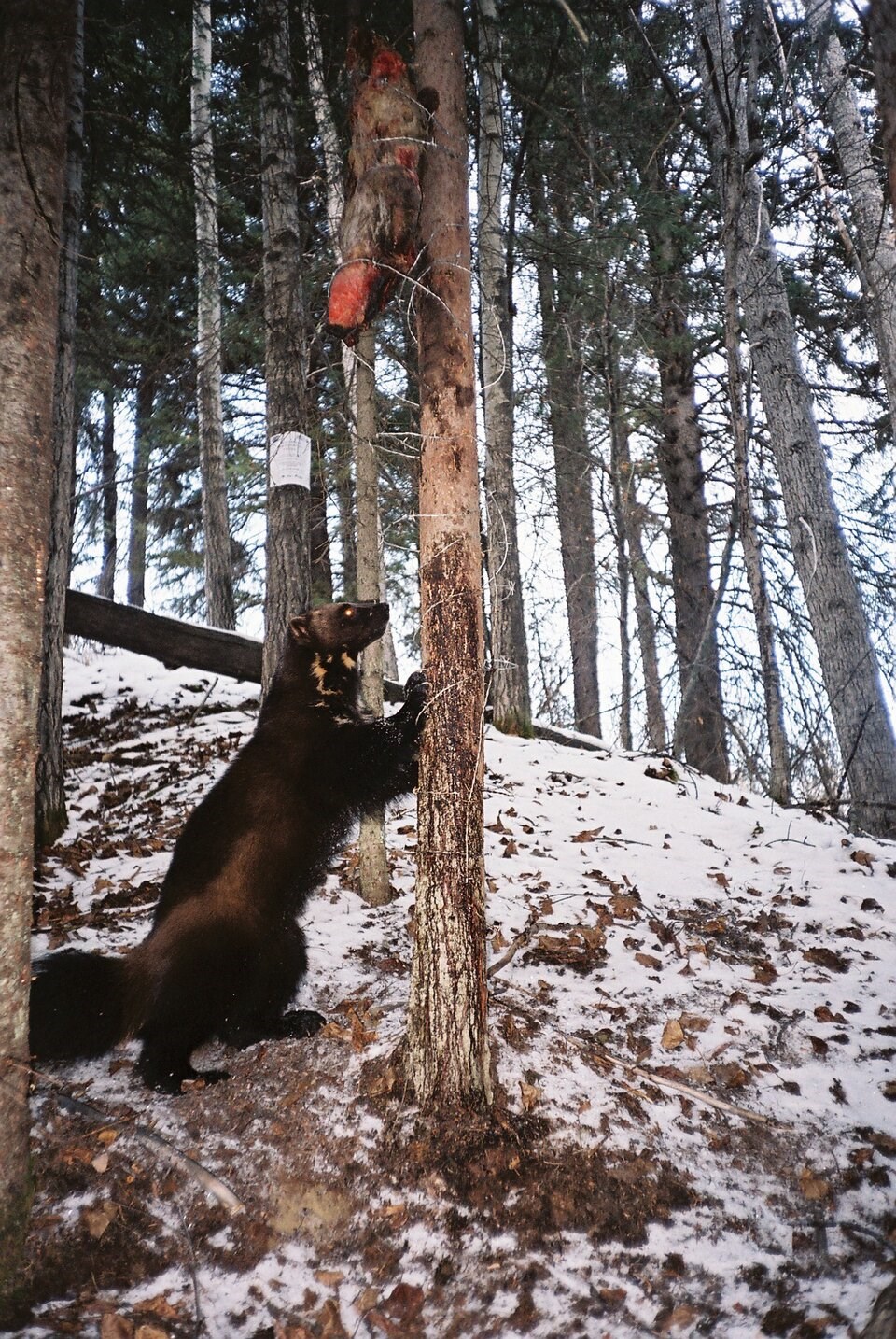
Wolverines are cunning animals. A stocky member of the weasel family, when hungry or backed against a wall, they can be vicious. They have been known to chase bears away from a kill. Some have even captured video of a wolverine taking down caribou.
“You pity the mountain goat that crosses paths with a wolverine,” said Aerin Jacob, director of conservation science and research at Nature Conservancy Canada.
But when it comes to humans, they tend to stay away. Originally inhabiting wide swaths of North America and Eurasia, wolverine populations across much of Eastern Canada and the United States have been eliminated by trapping, vanishing mature forests, human industry and settlements. Today, the continent’s populations are largely concentrated in the Arctic and mountainous regions of British Columbia.
It’s here where the animals can still find refuge, either in the relatively open tundra or up the snowy mountain slopes away from people and other predators. But as B.C.’s climate is increasingly warped by a global rise in carbon pollution, they are one of a number of species facing the prospect of migration or death.
“As the climate warms, wolverine range is contracting,” said Fisher. “In Kananaskis Country, the Golden area, you used to find wolverines. You don’t anymore.”
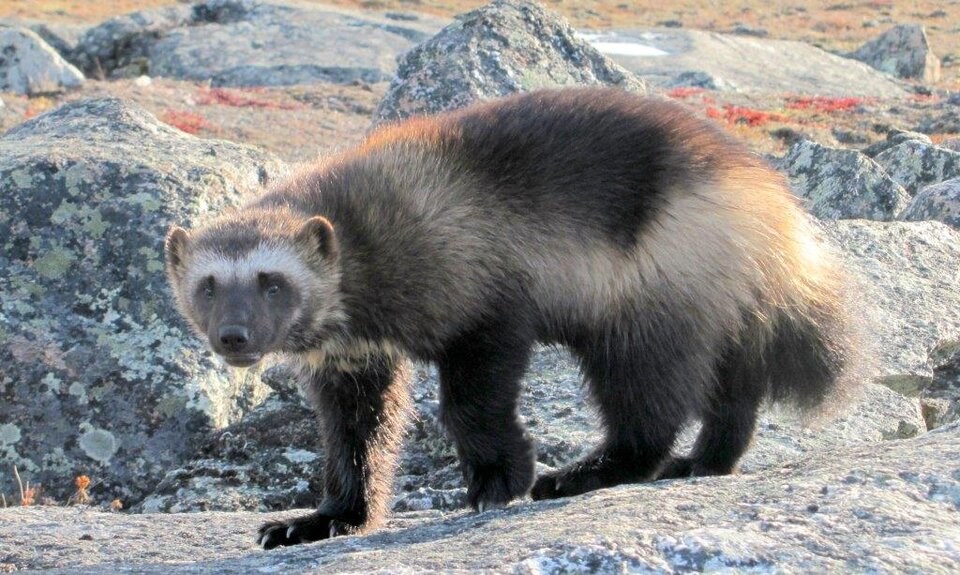
Some experts think it’s because of a dwindling snowpack — without deep drifts lasting through the spring, wolverines have limited options to build dens that are temperature-regulated for their young. Those who prescribe to the “refrigeration hypothesis” say a lack of snow means they have nowhere to store food.
For Fisher, natural pressures on wolverines are especially acute when it comes to competitors — a warming climate is opening up land for other predators to range further north.
“There’s this shifting dynamic,” said Fisher. “If you share that home range with 30 coyotes, who’s going to get to that food first?”
It’s one reason the biologist says wolverines are getting spotted in communities far out into Alberta’s prairie, he says. Wolverines are extremely territorial and males occupy up to 1,000 square kilometres of range. But a male can only migrate so far up a mountain, and when Arctic territory to the north is already occupied, there are few options to find refuge away from dwindling southern snowpacks.
“Their backs are against the wall,” said Fisher. “They push into the prairies and are never heard from again.”
“They’re just starving out… They’re just dying.”
Half the planet’s species on the move
The planet’s changing climate is projected to unravel the natural balance as we know it — from the planet’s biggest to its smallest creatures.
Some scientists have estimated there are about 10,000 viruses with the potential to jump from animals to humans; others have found evidence that under current trends, growing interactions between humans and wildlife will triple the rate of emerging diseases.
In B.C., projected shifts in temperature and rainfall are projected to upend the range of pathogen-carrying mosquitoes. Tick populations have already expanded their range, prompting a nearly 20-fold spike in reported cases of Lyme disease across country since 2009, according to data from the Public Health Agency of Canada.
In the air, current warming trends suggest between 34 and 94 bird species are high risk of losing their current range across much of B.C., according to the National Audubon Society.
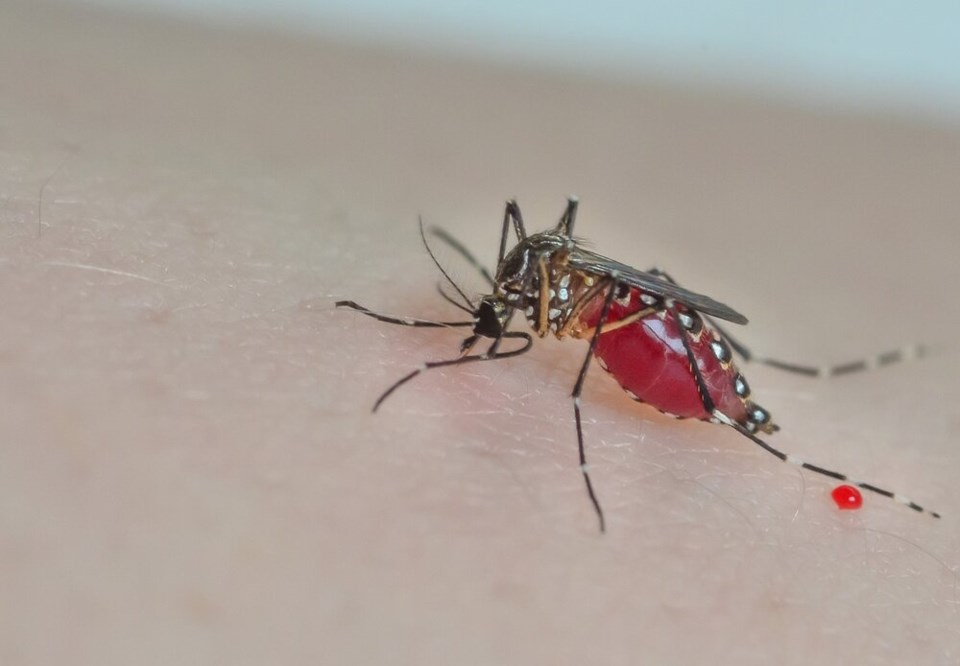
And on land, beavers and their landscape-altering dams have already arrived on the Arctic coast, attracted by a “shrubification” of taller, woody plants.
According to one study, every decade, land-dwelling species are thought to be shifting to higher elevations at a rate of 11 metres, and moving north at a rate of almost 17 kilometres. At sea, others have found marine species are moving more than four times faster.
That migration already appears to have been accelerated by recent extreme weather events. In B.C.’s coastal waters, scientists worry a record 2021 heat wave thought to have killed billions of sea creatures may have primed the coast to resemble something closer to sub-tropical East Asia.
It’s all part of what one 2017 study described as a “universal redistribution of life on Earth” involving half the planet’s species.
But the biggest shifts, say experts, will only come amid disaster.
Migration by fire
Trees don’t have wings, fins or paws, but they can still move.
Because trees can’t pick up and walk up a mountain or head north, migration usually occurs in the beak of a bird or the feces of a squirrel.
“Trees generally don’t move very fast,” Andreas Hamann, a researcher at the University of Alberta, said. “The trees that are in the ground now will be in the ground 50, 100, 200 years from now.”
“These are slow changes, unless you have fire.”
When a drought, wildfire or a mountain pine beetle infestation decimates forest, the land opens up for new species to take hold.
As early as 2006, Hamann published a study that concluded climate change could push the range of B.C.’s tree species north at a rate of 100 kilometres per decade. Within the coming decades, boreal and sub-boreal ecosystems could be largely pushed out of B.C. and replaced by a combination of Hemlock, Ponderosa pine and Douglas fir, according to the study published in the journal Ecology.
“If currently observed climate trends continue or accelerate, major changes to management of natural resources will become necessary,” Hamann concluded at the time.
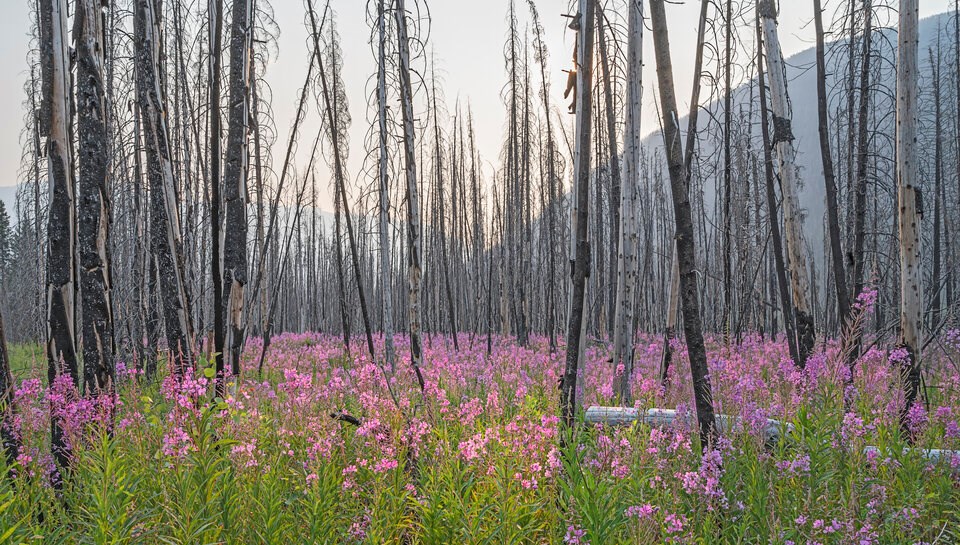
More than 15 years later, the researcher says those forecasts have slowly come true. In large areas of B.C.’s Peace and Interior plateau regions, he says it’s going to get too dry for trees.
In some cases, the borders between forests and grasslands are expected to stay put. In other areas, changing climatic conditions could mean a burned forest won’t come back at all. Hamann’s models show Lodgepole pine squeezing out the carbon-rich triangle of boreal in B.C.’s northeast. Further south, he says it could look even drier.
“I think they’re going to turn into grasslands,” Hamann said.
“They will look like the grasslands or desert ecosystems of the south,” said the researcher, “…like the Okanagan.”
On the coast, how forests will respond to extreme events is less clear: the 2021 heat wave had little effect on the forests of B.C.’s south coast. But on the north coast near Prince Rupert, Hamann said forests saw 20 to 30 per cent decline in productivity.
All of his future forest models could be thrown off by people planting trees, something known as “assisted migration.”
Whatever takes root, wildlife will certainly follow.
First contact
The pressures of a changing climate is set to upend the predator-prey relationships across large sections of B.C. As creatures engage in first contact, there will inevitably be winners and losers.
Consider a forest recently burned or decimated by a mountain pine beetle infestation. The shrubs that come up after a wildfire offer what Fisher says is a “bonanza” for white tail deer — a species that struggles in deep snow but is expected to vastly expand its range north as winters become milder and shorter.
“We salvage logs after fire goes through. That allows young vegetation to come in. That brings the deer. That brings in the wolves, the coyotes,” said Fisher.
More predators are expected to put further pressure on endangered caribou populations. Heat stress and an increase in disease due to winter tick infestations, meanwhile, are expected to lead to a decline in moose populations across much of the North America.
Both moose and caribou face further threats from a parasitic brain worm — white tail deer can spread the worm through their feces onto leaves and into the mouths of the vulnerable ungulates.
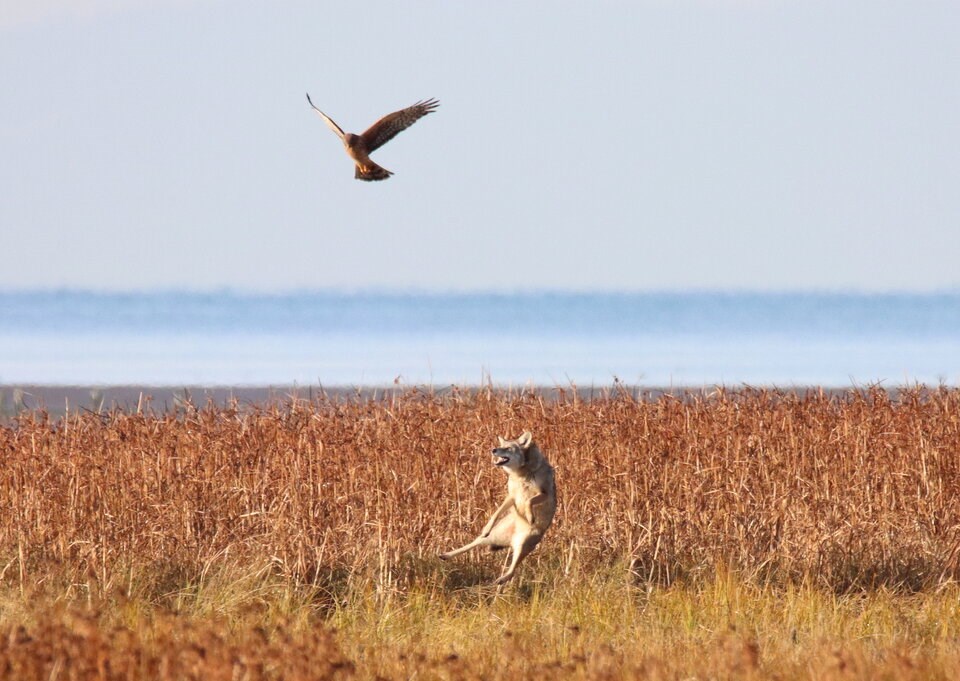
While other large mammals recede from boreal forests, deer and coyotes will increasingly take their place all year round, says Fisher.
“That’s having a profound change on the ecosystem,” he said.
As the climate warms, mass migration is going to come up against some hard northern limits.
Hamann says the tundra is like an Arctic desert where drought would likely limit the northern spread of trees and the animals that follow. Among amphibians, the availability of water will be the crucial factor, one study found. Other research has modelled a small but visible northward shift across all North American species, but that by 2070, there will be an overall decline in the richness of life inhabiting the continent.
Give them space
Experts say overhauling how B.C. manages its forests, grasslands and other ecosystems will be critical to giving animals the space they need to adapt to a changing climate. But even some of the best-intentioned people could make things worse for sensitive animals like the wolverine.
Jacob spent six years as a conservation scientist at the Yellowstone to Yukon Initiative, a group looking to strengthen one of the largest natural migration corridors in the Northern Hemisphere.
Also an avid backcountry skier, her work opened her eyes to the growing number of skiers and sledders venturing into wilderness areas that overlap with wolverine ranges. As snow turns to rain at lower altitudes and backcountry skiing explodes in popularity, more skiers are expected to crowd into B.C.’s snow-covered regions.
“Some places are going to have really crappy snow and some places will still have wonderful snow. A bunch of us going to be flocking to that,” she said.
“So it really is probably going to squeeze wolverines and people into these overlapping places.”
The best solution, Jacob said, is for scientists to share with the public as much as they can about the charismatic animals so when they hear “wolverine” they see more than a caricature, baby wolf, or Hugh Jackman.
“They think it's like this ferocious thing that's going to come and rip the face off a bear. And they don't realize that wolverines are super sensitive,” said Jacob.
“They can be really fierce, but they're also big scaredy cats.”
